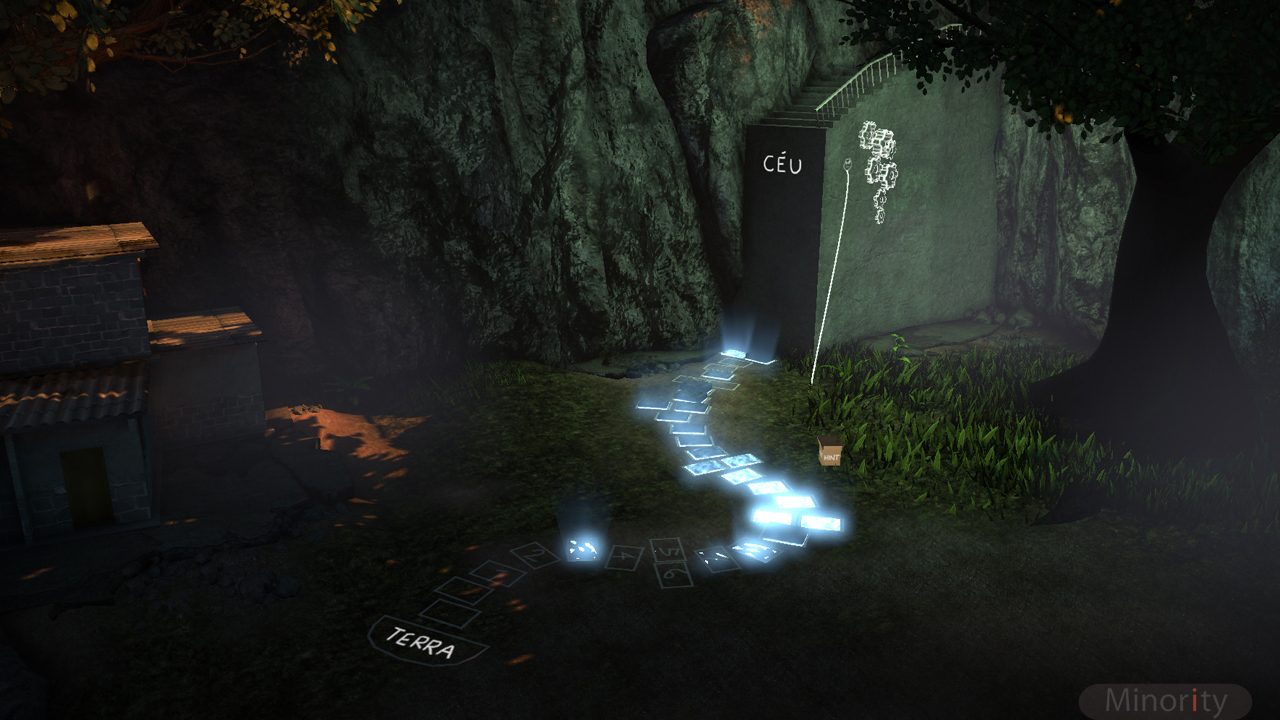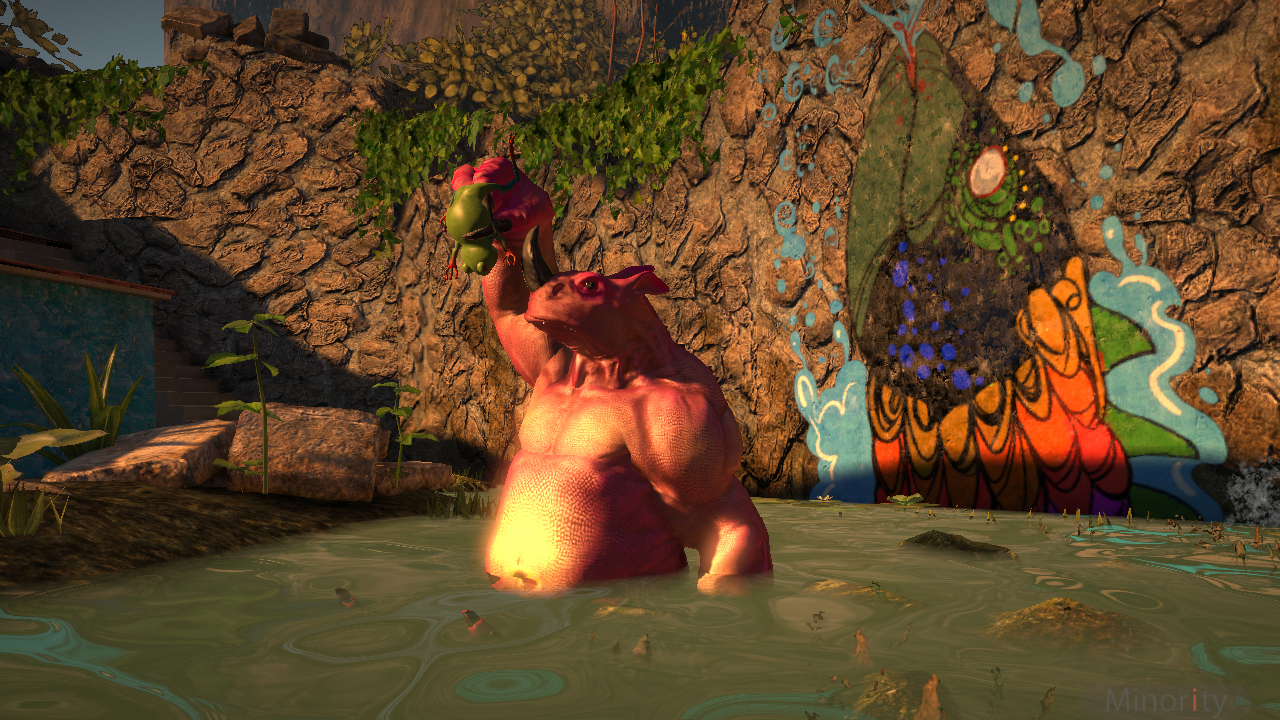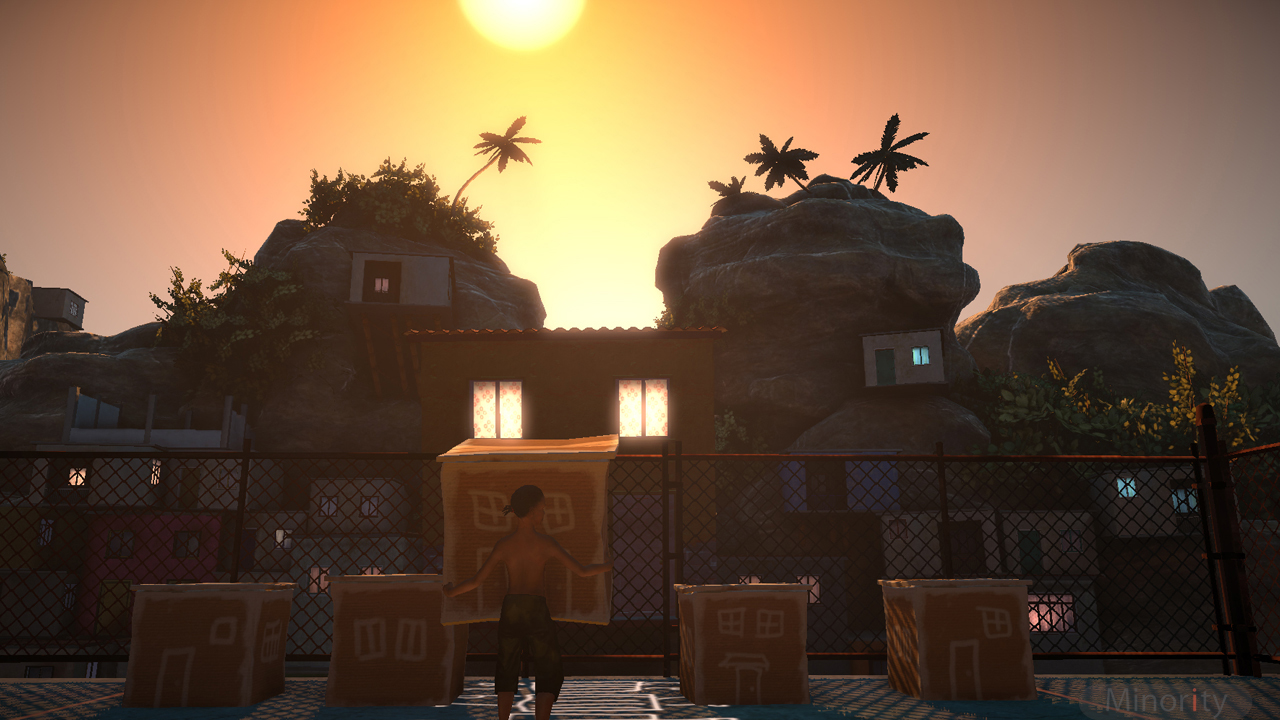
Pretend is a comfortable setting for video games. The light-hearted silliness endemic to interactive media (see the "Halo Hump," friendly fire) muddles efforts by game designers to add "realism," cramming more pixels into alien facial textures and apocalypse scenario explosions.
When a designer, then, sloughs unrealistic pretenses in favor of celebrating the medium’s ability to breathe "play" — like in LittleBigPlanet and, dare I say, Katamari Damacy — my inner gaming child rejoices. And when said designer accedes to its "adult" audience, layering the imaginative with an introspective nod at the game’s mechanical basis, my intellectual snob approves. But if such a designer were to boldly claim that the emotional context of the game pulls directly from a real (count it) personal experience, one with far-reaching and tragic familiarity, all my inner selves freeze in expectant awe.
For as magnanimous an introduction as I’ve given Papo & Yo (a name blending Spanish and Portuguese words, translated to an affectionate "Father and Me"), it’s a sweetly unassuming game squeaking onto the downloadable gaming scene at an equally demure demo tucked away in the Sony booth at E3 this year. In fitting child-like animation, a brief introduction explains that "the game is about a young boy, Quico, and his best friend, Monster." So the game is a relationship, albeit a complicated one. Monster, a pink, unintelligible, bipedal rhinoceros creature, is addicted to frogs, which upon consumption send him into a violent state, altering his appearance (black with fire-limbs) and transforming a lovably aloof gentle giant into an inconsolable enemy. Quico’s quest, and unwittingly Monster’s, takes the trail through a South American slum-burb towards the cure (assuming there is one) on the distant other end.

Minority, the studio behind Papo & Yo, runs on Sony’s Pub Fund and Canadian developer sweat, particularly that of former EA Design Director Vander Caballero (I swear, this is relevant). This game is his childhood; growing up in a South American favella, transformed by imagination, but marred by his relationship with his alcoholic father. The average player won’t get this background, as it’s nowhere to be found in the game — admittedly focused on evocative response over narrative. But what a shame! I was informed of Caballero’s personal stake prior to spending around twenty minutes with the game and it irreversibly transformed my experience with Quico, with his robot partner Lula, and the now haunting Monster. Never before had I imagined a game the perfect vessel for empathy. My imagination, as Quico proves, needs expanding.
Navigating a nearly deserted favella (heavy influence from hillside neighborhoods in Rio) requires the things of play to manifest dramatic physical changes. Secret illuminated doors in rock walls, levers that conjure cardboard cages, a well that ascends when filled with the unfortunately useful frogs (a well that bears suspicious resemblance to a tall, full mug): with the aid of Lula and Monster these puzzle-light environments bend to the will of an avid pretender. Quico designs his own world — the BFG of a child’s imagination tool kit. It’s the unbridling and simultaneous restriction of play — a concept Shigeru Miyamoto happily admits inspired Super Mario Bros. and The Legend of Zelda. In a darker lens, it’s the escapism characteristic to the medium it employs and a retreat from the sting of an abusive home.

Finding such distraction and joy in play permeates the environmental puzzles of Papo & Yo. Quico frees Monster from a soccer court (yes, court, not field) only to discover his way barred by a chain-link fence. An illuminated pad on the ground lowers the obstacle, but Monster must hold the way open for Quico. To say the least, he is an unwilling participant, meandering about the nearby grass, sniffing and staring off. Quico spots an auspicious cardboard box, overturned, marked in plain black letters, "HINT." Climbing underneath the box, Quico reveals crayon drawings depicting Monster and a smaller figure. He turns the box ninety degrees, still inside, to see more sketches, these depicting Monster chasing fruit and soccer balls. Exiting the box, Quico climbs the nearest tree to shake free its puzzle bounty: fruit. A quick toss onto the glowing pad with a whistle to Monster and the beast inadvertently allows Quico to continue exploring his neighborhood.
The boy finds a chasm separating him and a far bank to where Lula has hovered. Five cardboard boxes painted to resemble homes line the sidewalk before him along with a chalk drawing of a grinning, five-segment centipede. Quico moves the boxes to cover the blacktop art, quickly realizing that he’s moving full-size buildings in the process, the roofs of which bridge the canyon. How simple and charming, unexpected and inevitable a solution to teaching and immersing players simultaneously! Quico pretends as he quests, achieving results in both worlds; he escapes his worst fear by playing with his best friend.
The ideas Monster engulfs as readily as coconuts seem too big for a game so humble — downloadable nonetheless. It’s the timid presentation, however, that gives this game such emotional traction, surprise, and simple delight. The relationship from player to game, Quico to Monster, and the pretend to the actual are human; inside and out Caballero’s childhood, it is a study in empathy. And when Papo & Yo releases on PSN in early 2012, I look forward to my lesson in it.

















